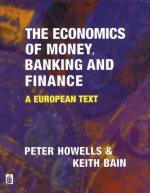Question
. Suppose stock returns can be explained by the following three-factor model: R i = R F + 1 F 1 + 2 F 2
.
Suppose stock returns can be explained by the following three-factor model: Ri = RF + 1F1 + 2F2 3F3 Assume there is no firm-specific risk. The information for each stock is presented here:
| 1 | 2 | 3 | |
| Stock A | 1.10 | .42 | .05 |
| Stock B | .72 | 1.27 | .17 |
| Stock C | .63 | .09 | 1.16 |
The risk premiums for the factors are 5.8 percent, 5.7 percent, and 6.4 percent, respectively. You create a portfolio with 35 percent invested in Stock A, 30 percent invested in Stock B, and the remainder in Stock C. What is the expression for the return on your portfolio? (Do not round intermediate calculations and round your answer to 2 decimal places, e.g., 32.16.)
| Factor Beta | |
| Factor F1 | |
| Factor F2 | |
| Factor F3 | |
If the risk-free rate is 3.3 percent, what is the expected return on your portfolio? (Do not round intermediate calculations and enter your answer as a percent rounded to 2 decimal places, e.g., 32.16.) Expected return %
Step by Step Solution
There are 3 Steps involved in it
Step: 1

Get Instant Access to Expert-Tailored Solutions
See step-by-step solutions with expert insights and AI powered tools for academic success
Step: 2

Step: 3

Ace Your Homework with AI
Get the answers you need in no time with our AI-driven, step-by-step assistance
Get Started


